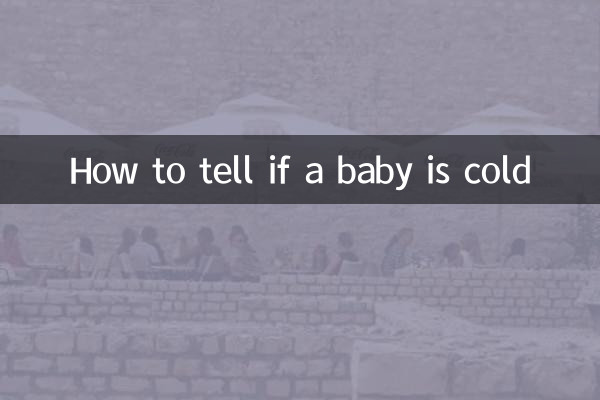How to tell if a baby is cold
As a new parent, determining if your baby is cold is a common but important question. The baby's body temperature regulation ability is weak, and excessive warmth or coldness may affect health. This article will combine the popular parenting topics on the Internet in the past 10 days to provide you with scientific judgment methods and practical suggestions.
1. Characteristics of infant body temperature regulation

The baby's temperature regulation center is not fully developed, and the subcutaneous fat is thin and easily affected by the environmental temperature. Here's a comparison of the differences in body temperature regulation in infants and adults:
| Project | baby | adult |
|---|---|---|
| thermoregulatory ability | Weak and susceptible to environmental influences | Strong, can be adjusted independently |
| average body temperature | 36.5-37.5℃ | 36.0-37.0℃ |
| Heat dissipation speed | Faster (larger body surface area ratio) | slower |
2. Four key parts to determine whether a baby is hot or cold
According to pediatricians, the following areas best reflect a baby’s true body temperature:
| parts | normal state | Supercooling behavior |
|---|---|---|
| nape of neck | warm and dry | cold or wet |
| hands and feet | Slightly cool (not ice cold) | pale/purple |
| Abdomen | warm | Chill |
| cheek | ruddy | pale or bruising |
3. Dressing Guide for Different Seasons
Based on recent measured data from parenting bloggers, babies should follow the principle of "one layer more than adults" when dressing:
| ambient temperature | Dressing suggestions | Things to note |
|---|---|---|
| >26℃ | Single layer cotton jumpsuit | Sun protection is required and avoid direct air conditioning |
| 20-26℃ | Cotton underwear + thin jacket | Keep your hands and feet warm |
| Underwear+sweater+jacket | Wear a hat to protect fontanelles |
4. Common misunderstandings and scientific suggestions
1.Myth: Cold hands and feet mean cold
Fact: It is normal for babies with poor peripheral circulation and slightly cool hands and feet. The temperature of the back of the neck should be taken as the standard.
2.Myth: Sneezing equals catching a cold
Fact: Babies have sensitive nasal passages, and sneezing may be self-cleaning. It needs to be judged in conjunction with other symptoms.
3.Scientific testing methods
• Use a thermometer to measure armpit temperature (36.5-37.5°C is normal)
• Use a baby-specific temperature and humidity monitor (it is recommended to keep the room temperature at 22-24°C)
5. Parenting experiences that are hotly discussed on the Internet
According to the analysis of social media data in the past 10 days, these topics have received the most attention:
| platform | hot topics | Discussion popularity |
|---|---|---|
| little red book | "Onion Dressing Method" Practice | 128,000 notes |
| Douyin | Baby Sleeping Bag Buying Guide | 320 million plays |
| Zhihu | Infant frostbite case analysis | 4876 discussions |
Summary:To judge whether the baby is cold or warm, it is necessary to comprehensively combine the physical signs of multiple parts to avoid misjudgment by a single indicator. Maintaining a suitable room temperature (22-24°C), choosing breathable cotton clothing, and checking body temperature regularly can keep your baby comfortable and healthy. If persistent low temperature or fever occurs, seek medical attention promptly.

check the details

check the details